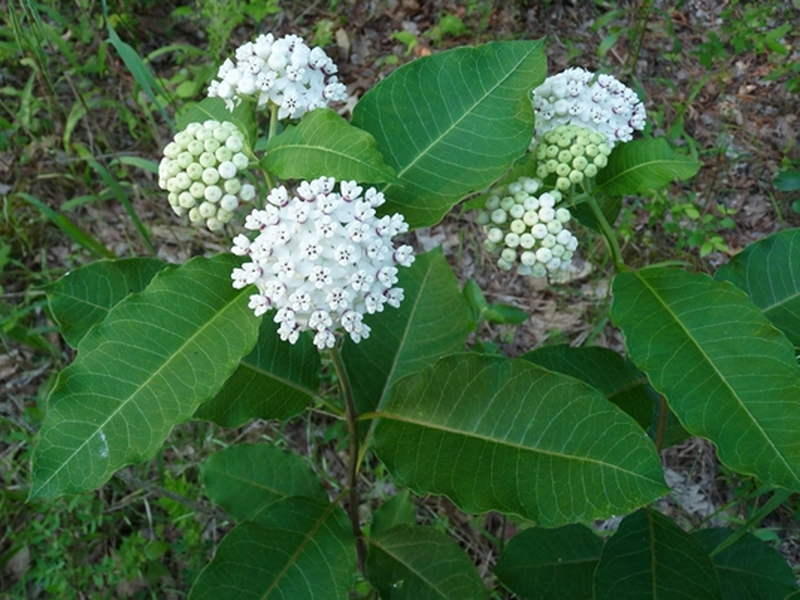White Milkweed
Asclepias variegata
Click here to download a PDF of this plant information page (for printing).

Sun Exposure: Sun, Part Sun
Season of Interest: Summer, Fall
Bloom Time: May - August
Bloom Color: White
Height: 8 to 36 in.
Spread: 12 to 24 in.
Spacing: 24 in.
Water Needs: Average
Maintenance: Very little
Soil Type: Clay, Loam, Sandy Rocky
Soil pH: Acidic, Neutral
Soil Drainage: Well drained
Pests: None
Diseases: None
Wildlife: Bees, Buterflies

Description:
White milkweed like most milkweeds has a deep root stock that helps the plant survive fire and drought. The plant grows to about 3 feet tall, sometimes taller, with 4-6 pairs of opposite leaves. Leaves are more or less elliptical and 3 to 5 inches long by 1 to 3 inches wide. The underside is lighter in color than the upper side and may have hairs on it. Flowers are waxy and white, frequently with reddish, pinkish, to purplish rings around the center. Flowers are bout 0.36 inches long, and are borne in loose to dense hemispherical clusters at the top of the plant. Inflated, but narrow, upright seed pods (follicles) are usually borne in pairs. The fruits of this plant resemble those of purple milkweed and poke milkweed.
This milkweed like most milkweeds produces copious amounts of nectar and is an important pollinator plant. The flowers have a sweet fragrance. Bees and butterflies can be seen on its flowers. White milkweed is a host plant for monarch butterfly caterpillars, although the plant tends to be in low densities and in some shade which may make it harder for monarchs to find it. For more information see:
plants.ces.ncsu.edu/plants/asclepias-variegata
Care and Growing Tips:
White milkweed is most often found growing along moist to dry shaded roadsides, in woodlands, in savannas, and in open forests. It tends to grow in light to moderate shade but tolerates full sun. This plant can grow and bloom in any cultivated and at least slightly fertile soil. Established plants are not bothered by either draughts or wind, but young shoots can be blown down by strong winds. Therefore, Asclepias prefer sites without active winds. Watering these plants is only necessary in times of drought when there is no rainfall for an extremely long-time during flowering. Fertilize only where the soil is extremely poor, and only once a year in early spring season, adding a mineral complex fertilizer to the soil to renew nutrients. If planted in fertile soil, no additional fertilization is needed.